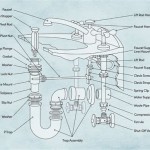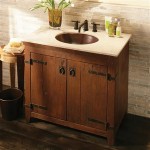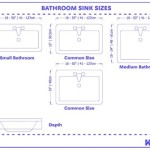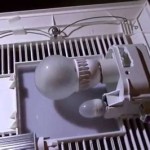How to Add a Bathroom Vent
Proper ventilation is crucial for any bathroom. It prevents moisture buildup, which can lead to mold, mildew, and structural damage. A well-functioning bathroom vent fan effectively removes excess moisture and odors, contributing to a healthier and more pleasant bathroom environment. This article outlines the process of adding a bathroom vent, covering the necessary steps from planning and material selection to installation and finishing.
Planning and Preparation
Before beginning any work, careful planning is essential. This includes determining the vent fan location, duct path, and electrical connections.
- Vent Location: Ideally, the vent should be placed centrally in the bathroom, or directly above the shower or bathtub, to effectively remove moisture at the source.
- Duct Path: Plan the shortest and most direct route for the ductwork to the exterior. Avoid unnecessary bends and turns, which can reduce airflow efficiency. The duct should be insulated to prevent condensation.
- Electrical Connections: Identify a nearby power source for the vent fan. A dedicated circuit is recommended to ensure adequate power supply. Consult local building codes for specific electrical requirements.
- Exterior Vent Location: Choose an exterior vent location that is away from intake vents for other appliances, and allows for proper venting to the outside. Soffit vents or roof vents are common choices.
- Ceiling Access: Ensure access to the attic or ceiling space above the bathroom for duct installation. This may involve cutting an access hole in the ceiling.
- Building Permits: Check local building codes and regulations to determine if permits are required for installing a bathroom vent. Obtain the necessary permits before starting the project.
Materials and Tools
Gathering the necessary materials and tools beforehand ensures a smooth installation process.
- Bathroom Vent Fan: Select a vent fan with an appropriate CFM (cubic feet per minute) rating for the bathroom size. Consult manufacturer guidelines for recommended CFM ratings.
- Ductwork: Choose rigid metal or flexible ductwork, ensuring it is the correct size for the vent fan. Insulated ductwork is recommended to minimize condensation.
- Exterior Vent Cap: Select a vent cap designed for bathroom ventilation, ensuring it is weatherproof and pest-resistant.
- Electrical Wiring and Connectors: Purchase the necessary wiring, wire nuts, and electrical connectors for connecting the vent fan to the power source. Consult local building codes for specific wiring requirements.
- Drywall Saw or Utility Knife: Used for cutting the ceiling drywall for the vent fan and access hole.
- Drill and Screwdriver: Necessary for securing the vent fan and ductwork.
- Caulk and Sealant: Used to seal any gaps and prevent air leaks around the vent fan and ductwork.
- Safety Glasses and Gloves: Essential for protecting yourself during the installation process.
Installation
Following a systematic installation process is crucial for a successful outcome.
- Ceiling Opening: Carefully cut the ceiling drywall to create an opening for the vent fan housing, ensuring it fits snugly.
- Ductwork Installation: Run the ductwork from the vent fan location to the exterior vent cap, securing it with straps or clamps. Seal all joints and connections with appropriate sealant.
- Electrical Connections: Connect the vent fan wiring to the power source, following all local electrical codes and regulations. Use appropriate wire connectors and secure all wiring.
- Vent Fan Installation: Insert the vent fan housing into the ceiling opening and secure it to the ceiling joists with screws. Connect the ductwork to the vent fan housing.
- Exterior Vent Cap Installation: Attach the exterior vent cap to the exterior wall or roof, ensuring a tight seal and weatherproof connection.
- Finishing: Install the vent fan grille and cover. Apply caulk around the edges of the vent fan housing to seal any gaps and create a finished look.
Testing and Maintenance
After installation, testing and regular maintenance are important to ensure proper operation.
- Testing: Turn on the vent fan to ensure it is operating correctly and effectively removing moisture and odors. Check for any unusual noises or vibrations.
- Cleaning: Regularly clean the vent fan grille and housing to prevent dust and debris buildup, which can restrict airflow. Consult the manufacturer's instructions for specific cleaning recommendations.
- Inspection: Periodically inspect the ductwork and exterior vent cap for any damage or obstructions. Ensure the vent cap is free of debris and pests.

Install A New Bathroom Vent Fan Light

Installing A Bathroom Fan Fine Homebuilding

Venting A Bath Fan In Cold Climate Fine Homebuilding

How To Install A Bath Exhaust Fan Diy

How To Vent A Bath Fan Through The Roof This Old House

Bathroom Fan Installation How To Install A And Tips Check More At Http Www Showerremodels Or Vent

Bathroom Exhaust Fans Building America Solution Center

How To Install A Bathroom Fan Diy Step By Guide

Invisible Ventilation For A Better Bath Fine Homebuilding

How To Install A Bathroom Exhaust Fan
Related Posts







